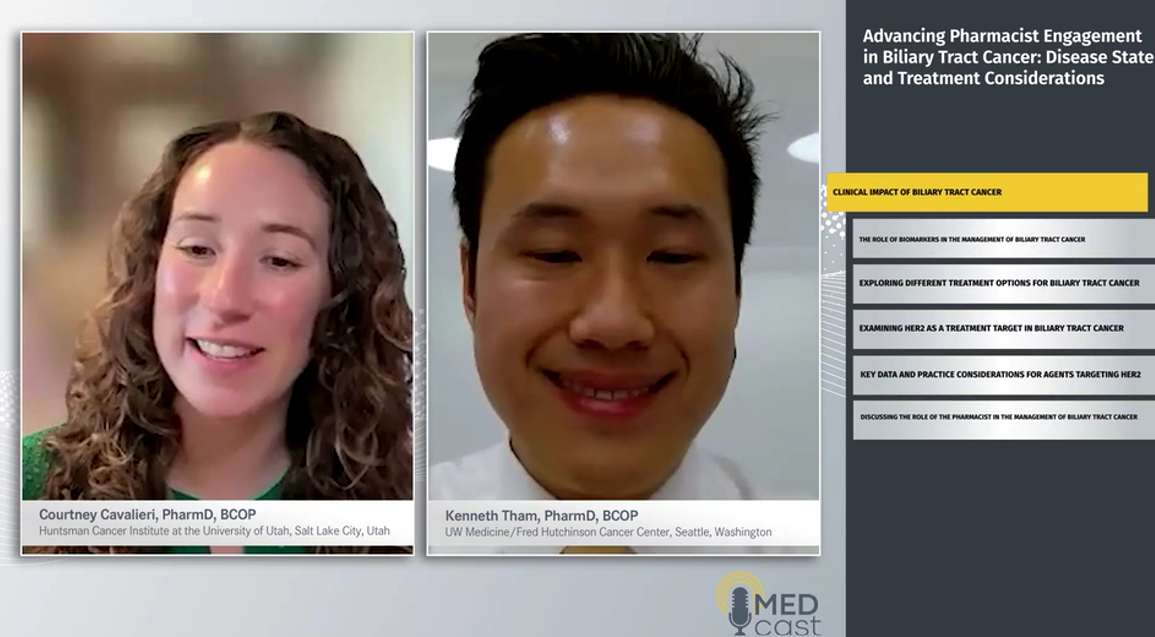Panelists discuss how first-line treatment typically involves gemcitabine-based cytotoxic chemotherapy (particularly gemcitabine with cisplatin) that has evolved to include chemo-immunotherapy combinations with checkpoint inhibitors like durvalumab and pembrolizumab, while second-line options include FOLFOX and targeted therapies based on specific mutations, with detailed focus on FGFR2 inhibitors like pemigatinib and futibatinib, which show promising response rates (35%-42%) but require careful monitoring for unique adverse effects including hyperphosphatemia and dermatologic toxicities.

administrator



